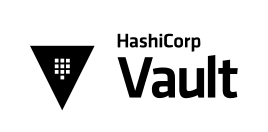Tag: Security Practices
In today's online world, maintaining website security is vital. With new cyber threats popping up all the time, website owners have to be extra careful to protect their data and keep their visitors' trust. That's where Liquid Web comes in. We're all about making sure your website stays secure, no matter what.
Top 10 Web Server Security Best Practices
How Can You Ensure Security on a Server?
It is important to secure your server to prevent data loss or security compromises. Because security is such a challenging subject for many, it often goes unheeded. Many are caught unaware when an issue arises. By following these best practices, you can significantly lower your risk of being compromised by a malicious actor.
Alert Logic Security and Compliance Suite
Introduction
Intrusion detection systems (IDSs) are an ever-present requirement in a cybersecurity infrastructure to ensure a server or internal network is protected. An intrusion detection system is either a hardware device or software program that actively monitors a server or group of servers for network policy violations or malicious activity. Any suspicious activity, attempted attack, or policy violation is reported and logged to a centrally located security information and event management (SIEM) system database, or directly to a security administrator for further review. This article explores Liquid Web’s intrusion detection product called Alert Logic Security and Compliance Suite.
Guide to Installing and Configuring Vault

What is Vault?
Vault protects and secures access to multiple types of confidential data. It stores and manages sensitive password information, API keys, and access tokens that exist in a low trust environment and generates dynamic access to authenticate users to ensure they have authorized ingress and availability to a file, location, service, or application.
Fully Managed Cloud App Infrastructure Protection (AIP) (formerly Threat Stack)
Introduction
This article will review some of the more technical aspects of F5 Distributed Cloud AIP. F5 Distributed Cloud AIP is a platform-independent intrusion detection system (IDS) designed to provide users with a unique view into various integrated server security functions. It monitors both Linux and Windows servers as well as Kubernetes or other container-based server infrastructures to observe behaviors and detect malicious, uncommon, and risky activity.
Microsoft Exchange Server Security Update
Introduction

In this article, we provide updated information concerning the ongoing threat posed by the malware directed at Microsoft Exchange Servers noted in CVE-2021-26855. We also furnish the steps needed to update and secure your Microsoft Exchange Server. In a recent post, the Cybersecurity & Infrastructure Security Agency posted a priority security advisory regarding the recent Microsoft Exchange Server vulnerability. They state:
What is SIEM?

Security Information and Event Management (or SIEM) is a subset of the computer security field, where applications and services join forces with security event management and security information management. When united, these disciplines provide significantly improved real-time statistical data and threat analysis of alerts generated by the related applications. The 2021 Internet Security Threat Report from Sophos denotes that are not only the number of attacks on the rise but also the diverse nature of methodologies and vectors of incursions used. This necessitates the fact that adding a SIEM is especially warranted at this time.
What is Blockchain? A Tutorial

The idea of blockchain itself may sound complicated, but the premise is simple. Blockchain is a zero-trust, fully decentralized peer-to-peer data storage system that spreads verified information across participants in the chain, referred to as nodes. Blockchain stores this information in blocks that are chained together. As new data arrives, it is recorded into a block. Once a block has been filled with information, it is linked to the previous block. This process allows the data to be bound together in sequential and chronological order.
How to Locate Open Ports in Linux
How To Set Up Two-Factor Authentication in cPanel
What is 2FA
Two-Factor Authentication (or 2FA as it often referred to) is an extra layer of security that is used to provide users an additional level of protection when securing access to an account.
Our Sales and Support teams are available 24 hours by phone or e-mail to assist.


